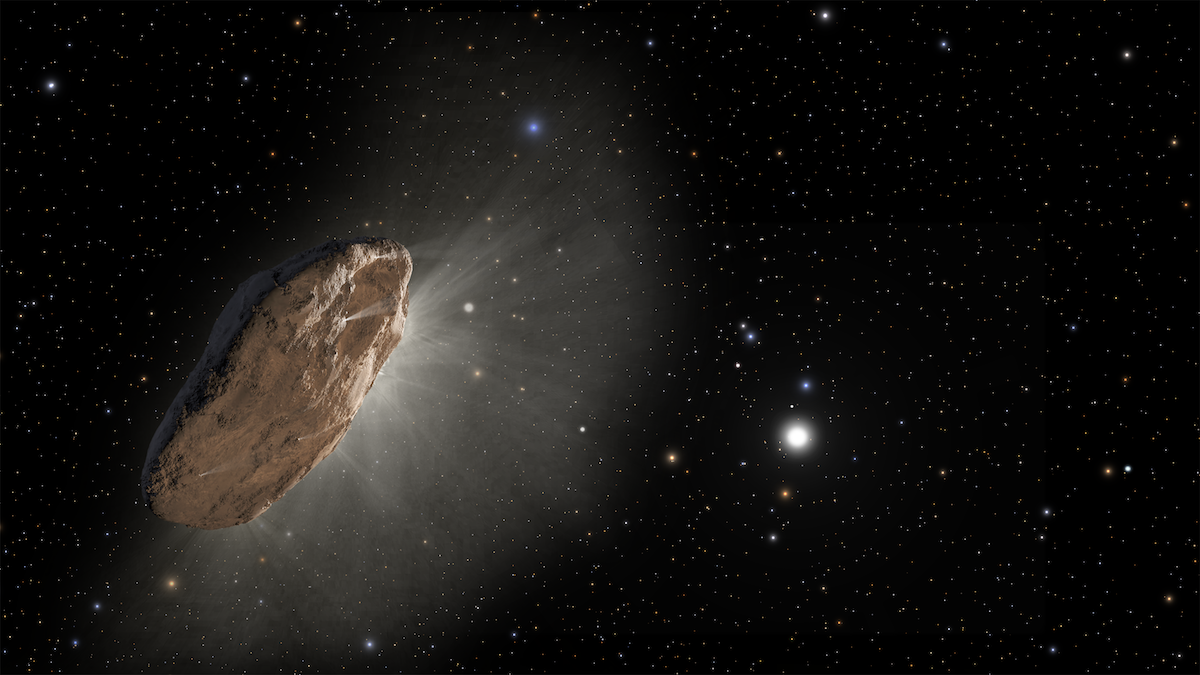

This artist’s illustration shows the first identified interstellar visitor, 1I/'Oumuamua, discovered in 2017. The wayward object swung within 24 million miles of the Sun before racing out of the solar system. 1I/'Oumuamua still defies any simple categorization. It did not behave like a comet, and it had a variety of unusual characteristics. As the complex rotation of the object made it difficult to determine the exact shape, there are many models of what it could look like. Credit: NASA, ESA, and J. Olmsted and F. Summers (STScI)]
Less than two months after it launched on Christmas day, NASA has announced that researchers are using the James Webb Space Telescope to study one of the most exciting findings in planetary science in recent years — interstellar objects passing through our solar system. So far, only two other objects from other star systems have been confirmed, though many, many more are thought to exist.
“The supreme sensitivity and power of Webb now present us with an unprecedented opportunity to investigate the chemical composition of these interstellar objects and find out so much more about their nature: where they come from, how they were made, and what they can tell us about the conditions present in their home systems," explained Martin Cordiner, principal investigator of a Webb Target of Opportunity program to study the composition of an interstellar object.
“The ability to study one of these and find out its composition — to really see material from around another planetary system close up — is truly an amazing thing,” said Cordiner in a NASA press release. Cordiner is an astrophysicist at NASA's Goddard Space Flight Center in Greenbelt, Maryland and research associate professor with the Institute for Astrophysics and Computational Sciences (IACS) in the Department of Physics at The Catholic University of America.
The first two interstellar objects detected were very different: One was very comet-like, and one was not. Cordiner and his team hope to find out how unique those objects were and whether they're representative of the broader population of interstellar objects.
Cordiner also led the team that discovered a peculiar chemical composition for 2I/Borisov in 2020, the second interstellar object detected in our solar system.